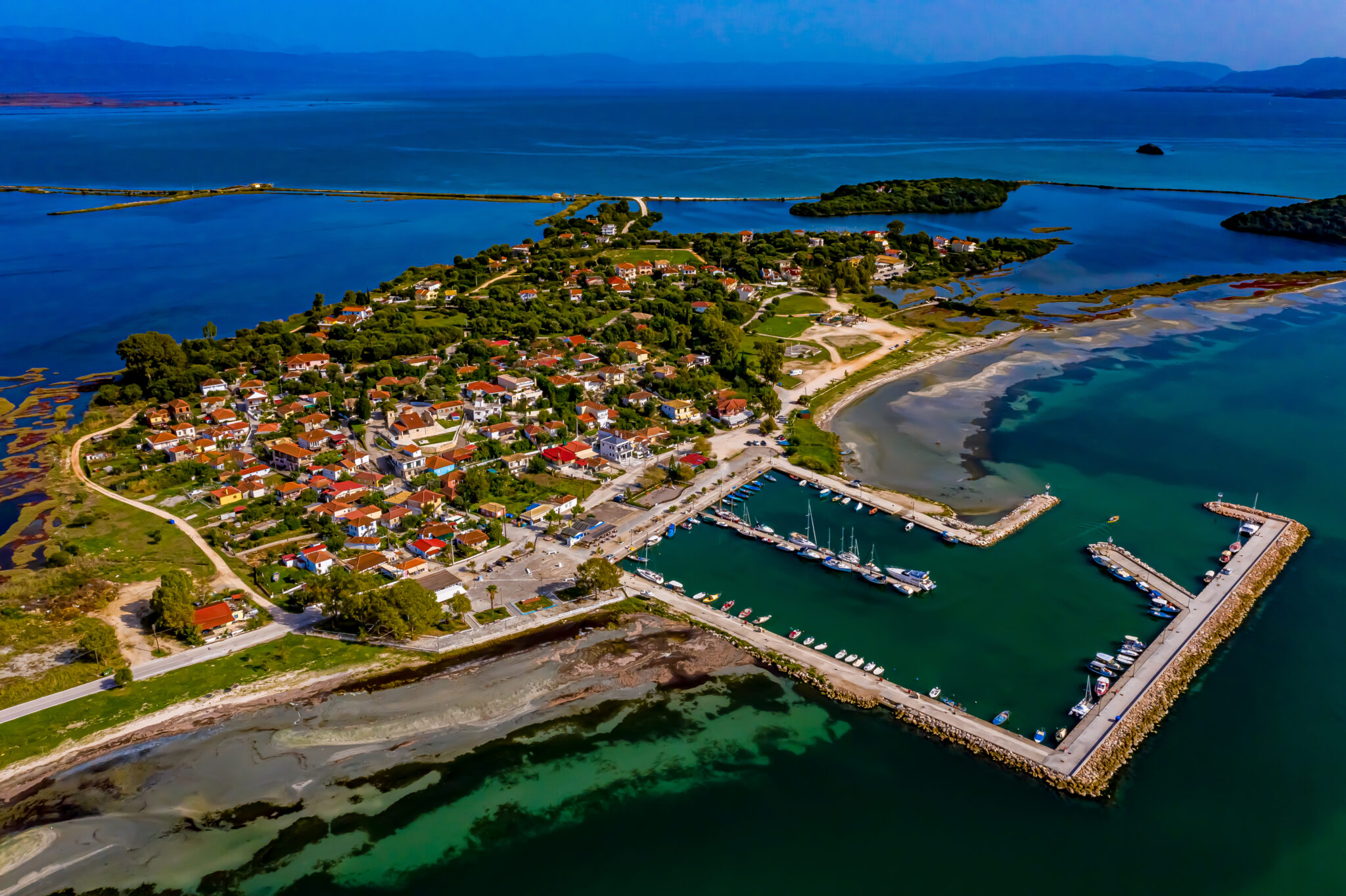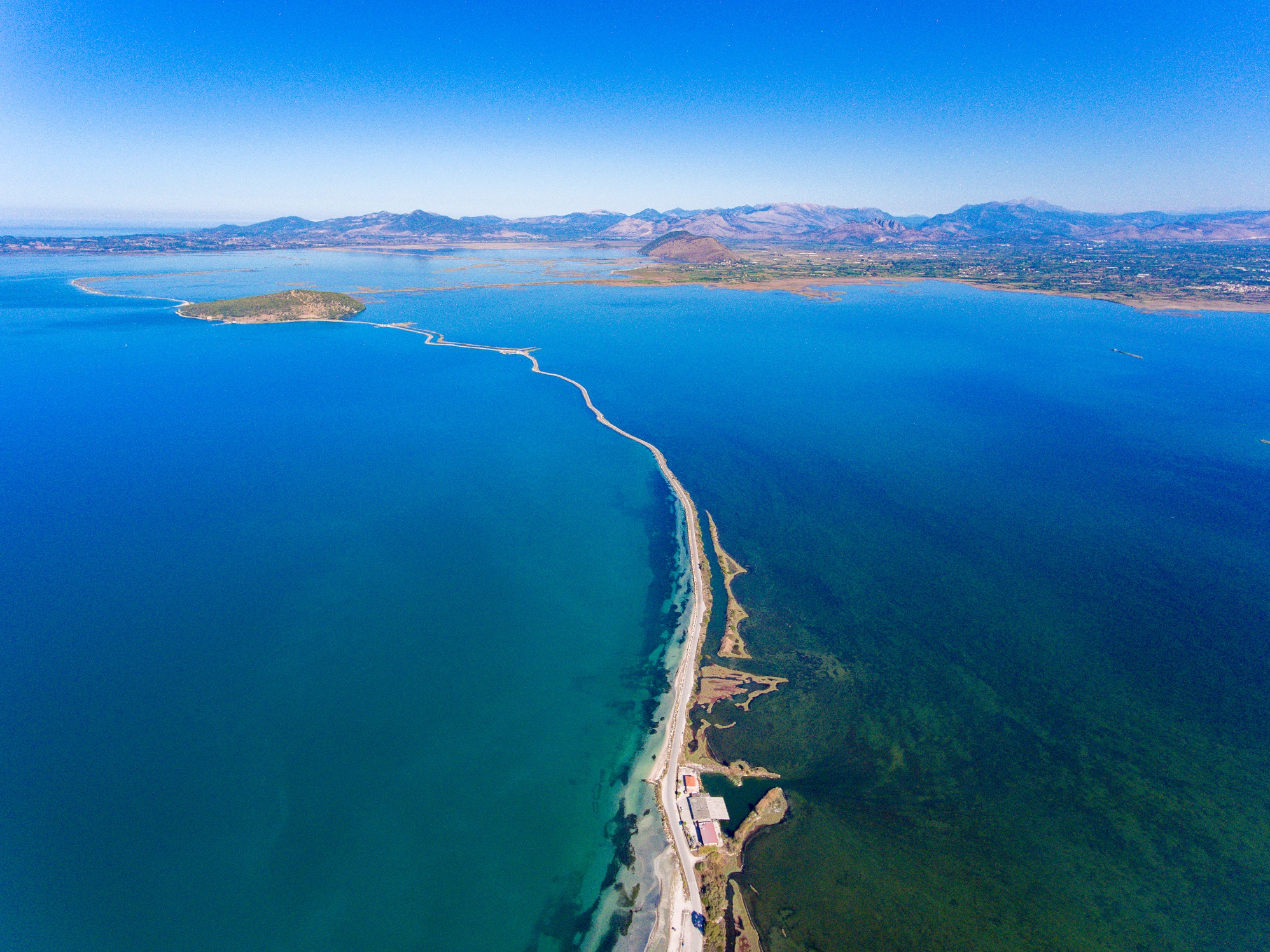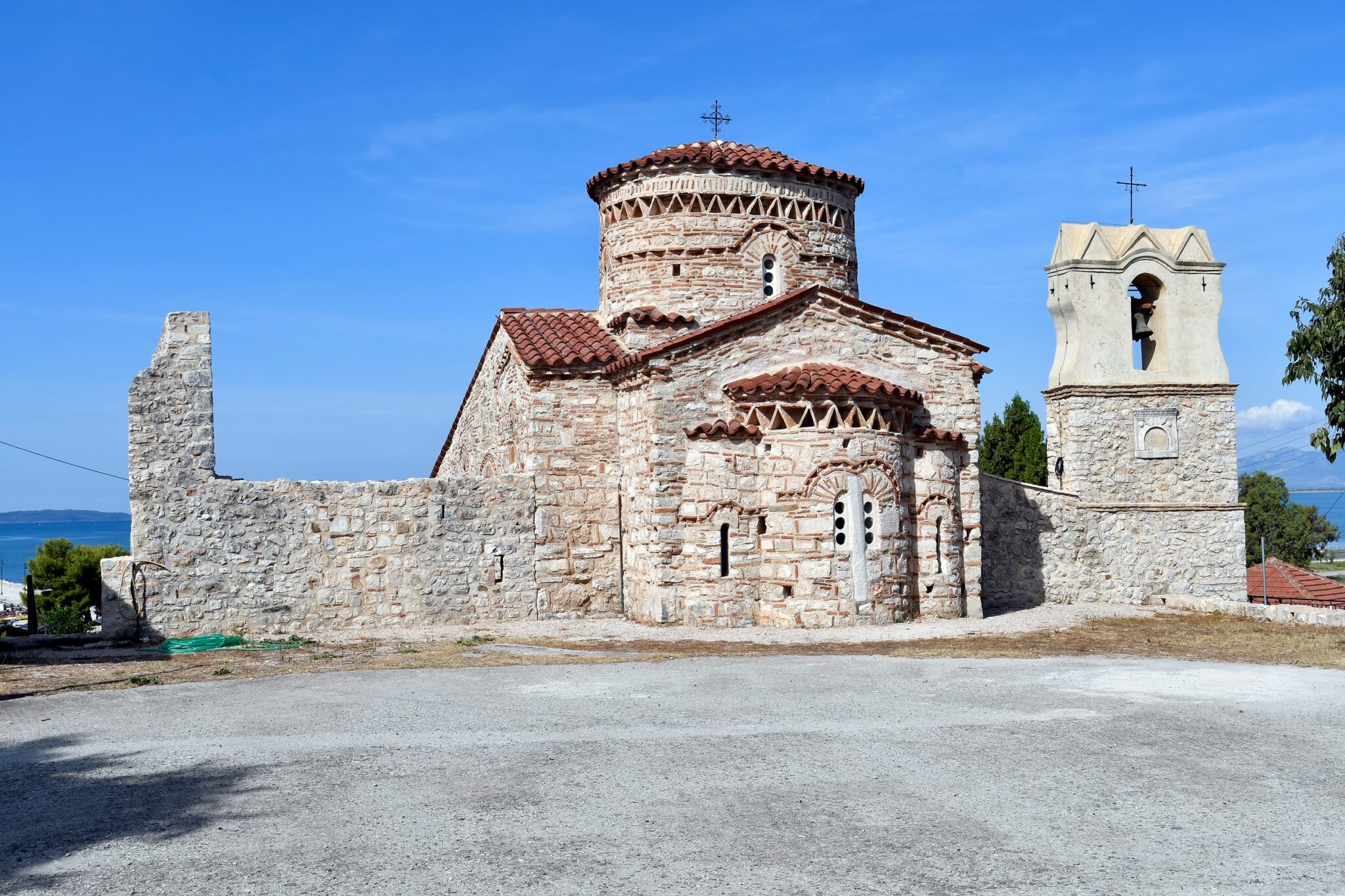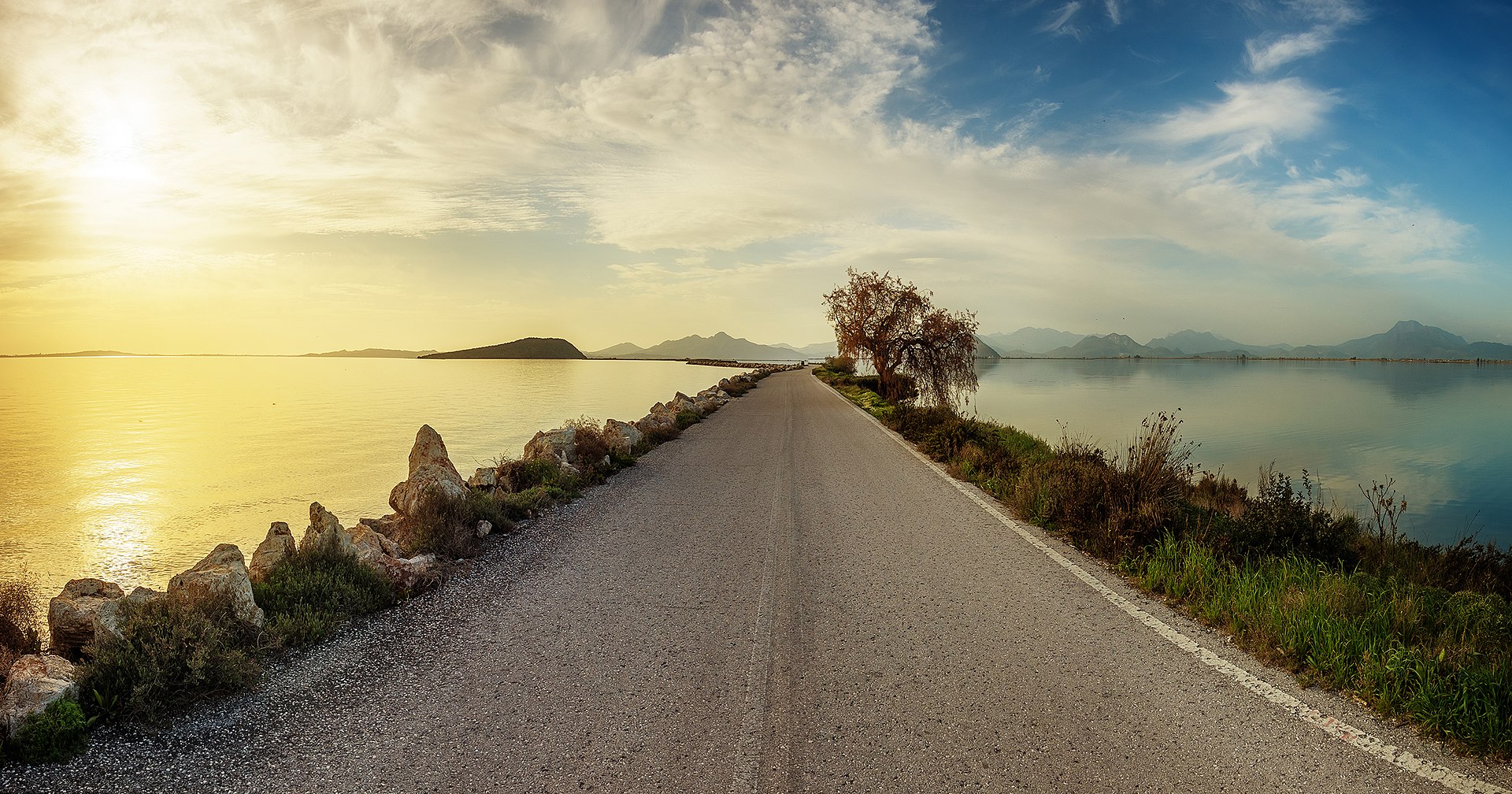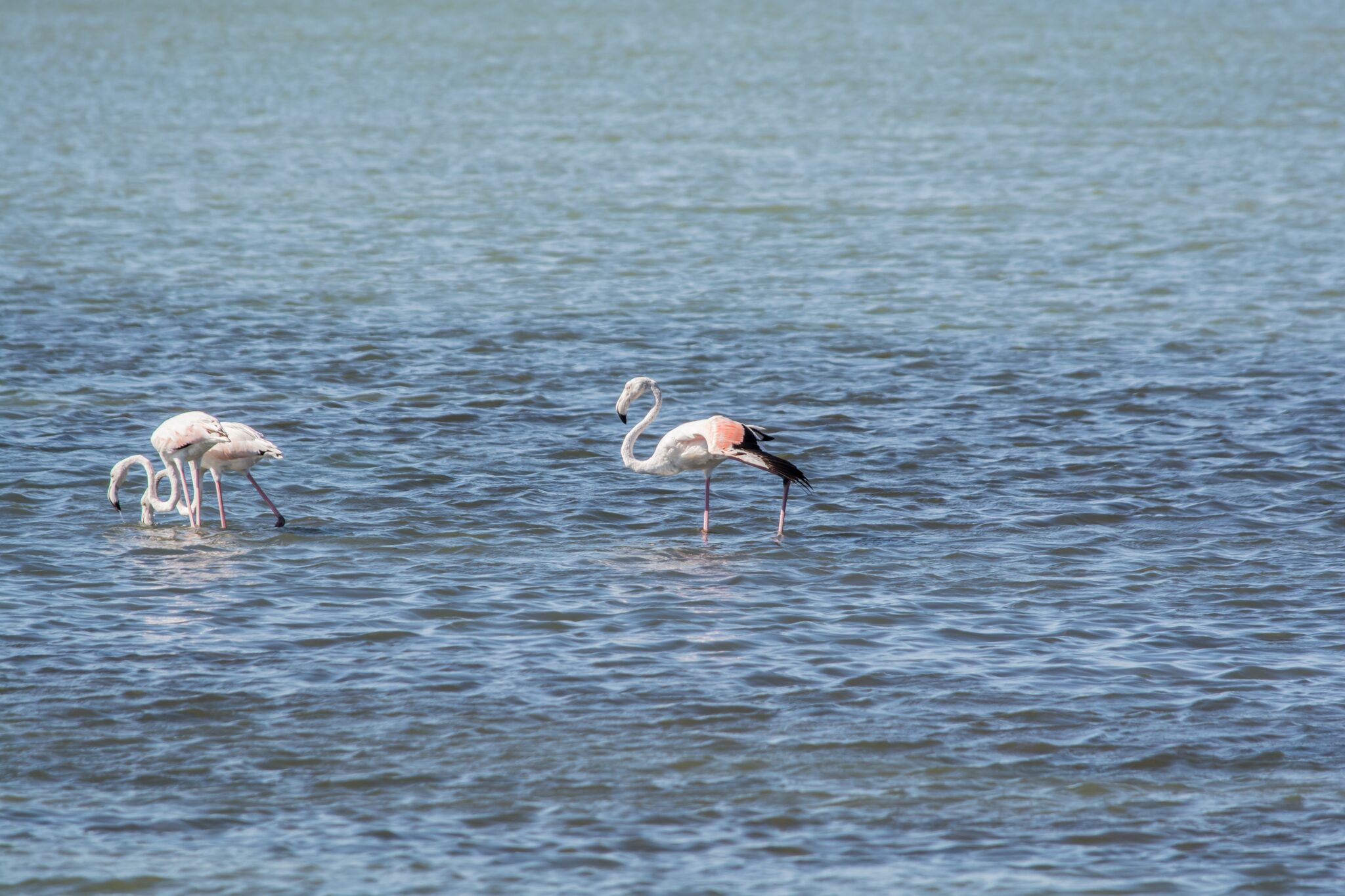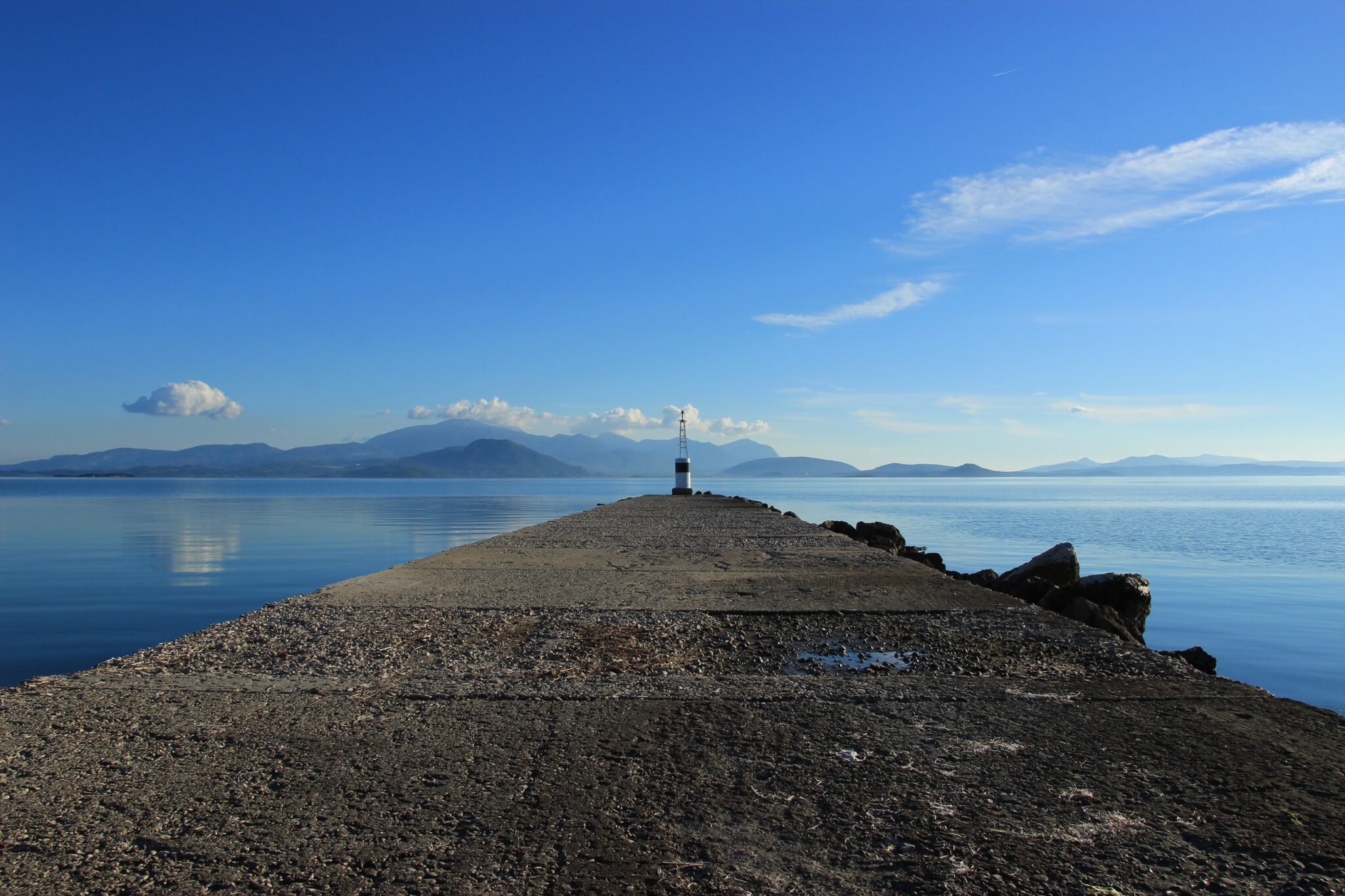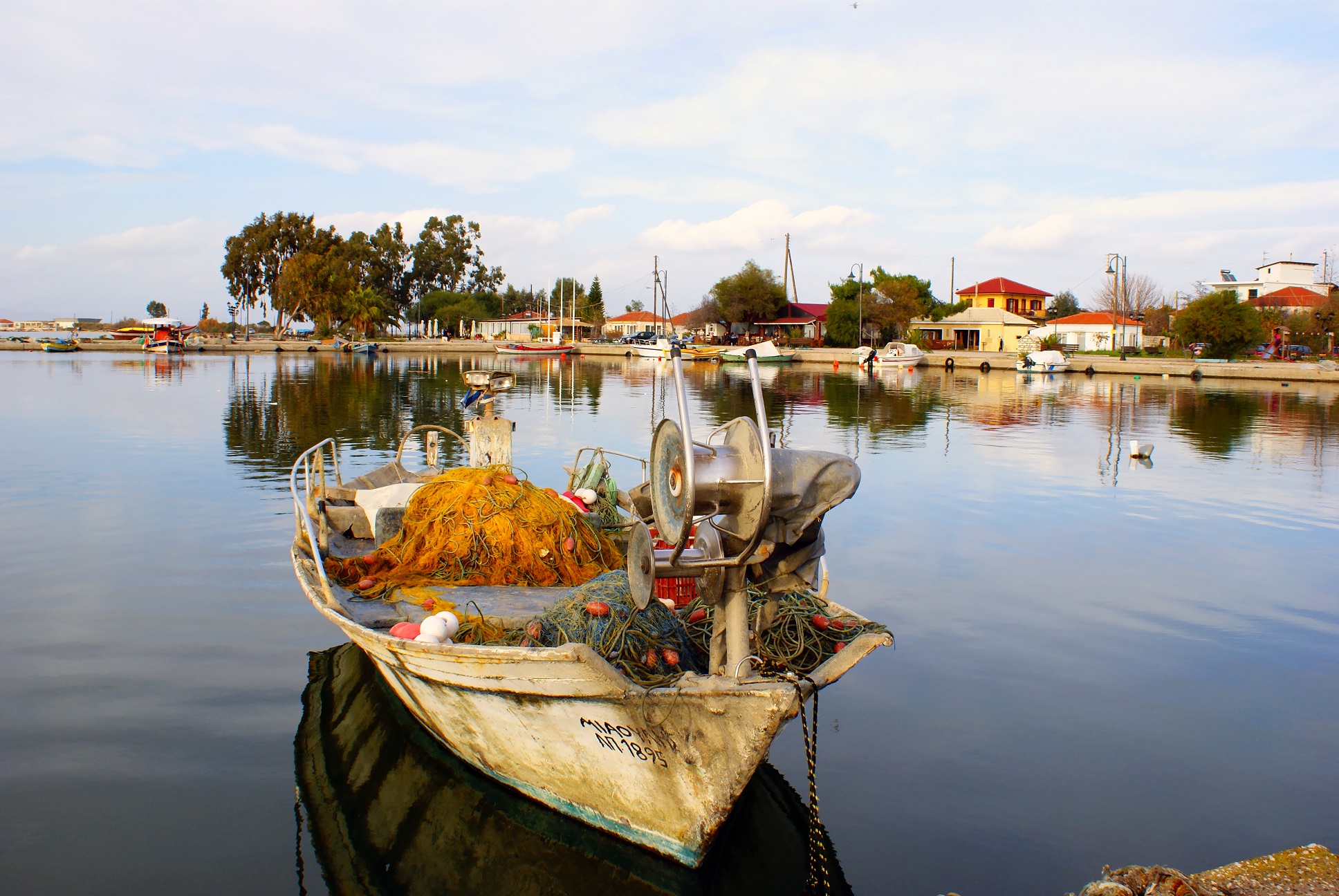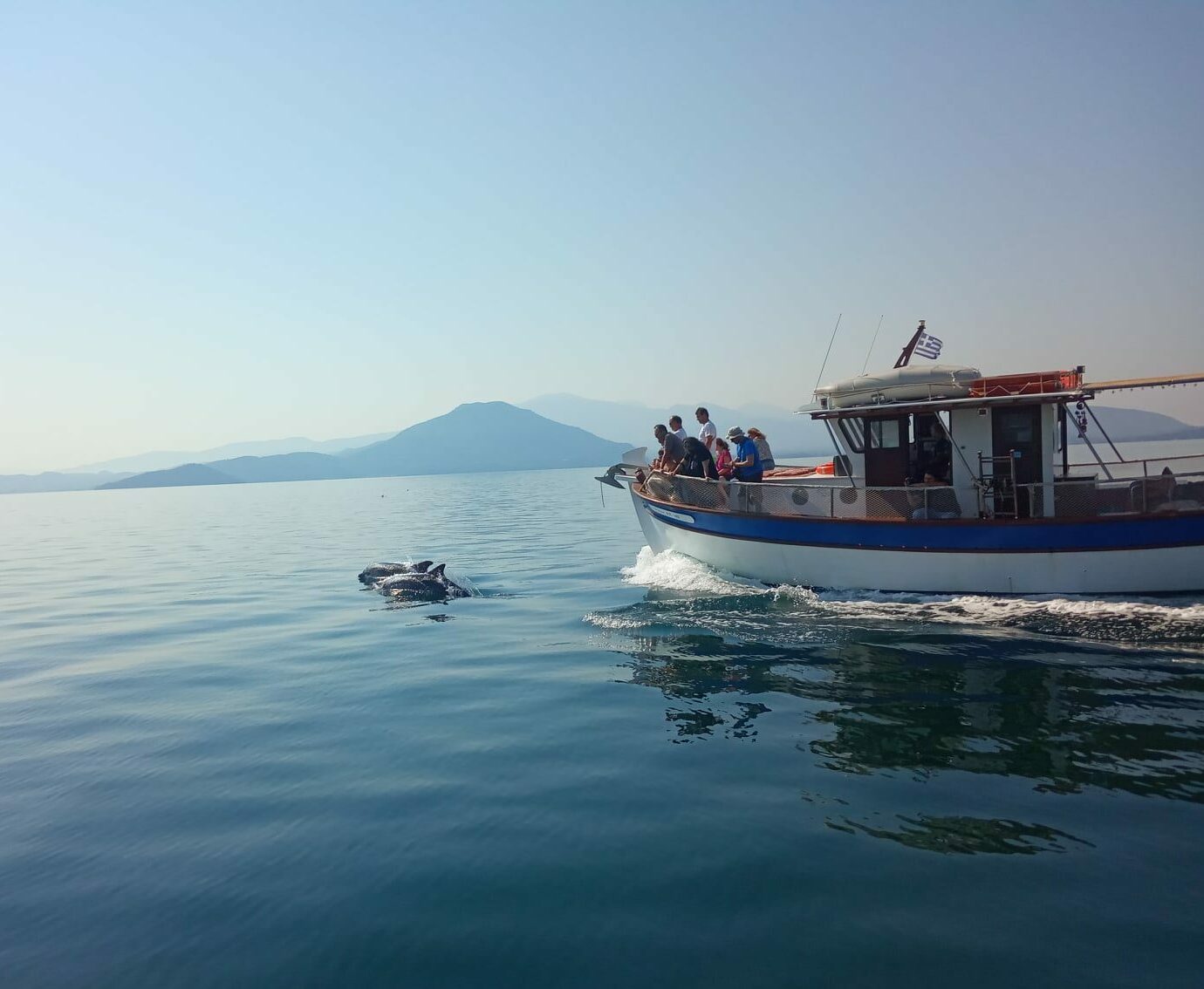Almost at the heart of the Ambracian Gulf lies a small island known only by a few. Although the tiny island in the middle of the Ambracian Gulf is also known as Pera, and the wider area, as Korakonisia (crow island) since the rocks and sandy beaches of the region serve as an ideal spot for crows seeking fish that have lost their way in the Ambracian Gulf’s waters.
Perhaps the most striking part of the journey to Koronisia is the long asphalt-paved road, almost 20 kilometers in length, which connects the small island settlement with Arta and has the dreamy appearance of floating above the water’s surface.
Koronisia could easily serve as the mise en scene for a movie, with a tranquil landscape that immediately captivates the senses, inviting you to explore this unknown corner of Greece. With a population of not more than 160 permanent residents, Koronisia is essentially a picturesque fishing village almost in the centre of the Ambracian Gulf’s lagoon. And like every genuine Greek fishing village, it is renowned for its great fish taverns with traditional recipes and abundant seafood dishes that arrive fresh, straight from the island’s small harbour.
A visit to Koronisia wouldn’t be complete without exploring the historic Church of the Nativity of the Virgin Mary. This church is the only surviving part of an ancient monastery founded around the 10th century by a monk from Korytsa. The monastery’s history fades into the depths of time, and the extent of its fame in the Byzantine era remains unknown. Unfortunately, today, nothing remains of the monks’ ancient cells or the monastery walls, as they were completely destroyed around 1910.
Even though the monastery has been lost to time, a visit to the church is still a truly worthwhile experience. Perched atop the small island, the church offers a breathtaking panoramic view of the Ambracian Gulf. Ideally, you’ll encounter pleasant weather, allowing you to soak in the landscape beneath sunny skies and a clear horizon. Nonetheless, even if you find yourself surrounded by wintry fog, the mystical ambiance is bound to create a uniquely memorable experience.
If you’re interested in exploring the vibrant natural beauty of the area, consider visiting the lagoon of Tsoukalio, where you can discreetly admire storks, flamingos, and other lesser-known wild birds of the Greek countryside that find a safe haven in the broader Ambracian Gulf area.
Read also:
Ancient Agora – Pnyx – Kerameikos: Three archaeological sites combining walking with history
Tour of Aegina, Greece – Neoclassical buildings, pistachios and archaeological sites
Ramnous and Brauron: Two archaeological gems on the coast of Attica



